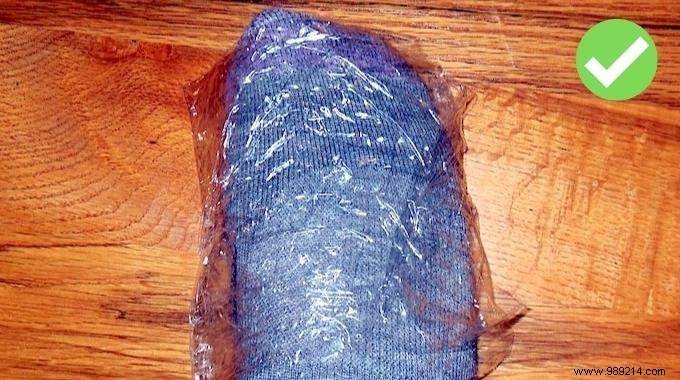
Tired of cold feet during winter?
It's true that it can be difficult to keep your toes warm.
But don't worry, there are plenty of effective (and inexpensive) tricks to stop being cold.
Look at me; I am very chilly and I used to get sick all the time because of it.
Well, thanks to these tips from my podiatrist, I can tell you that I never have cold feet again.
No matter the situation or the weather conditions, my little toes are warm!
Here are 18 tips to stop having cold feet during the winter. Watch:
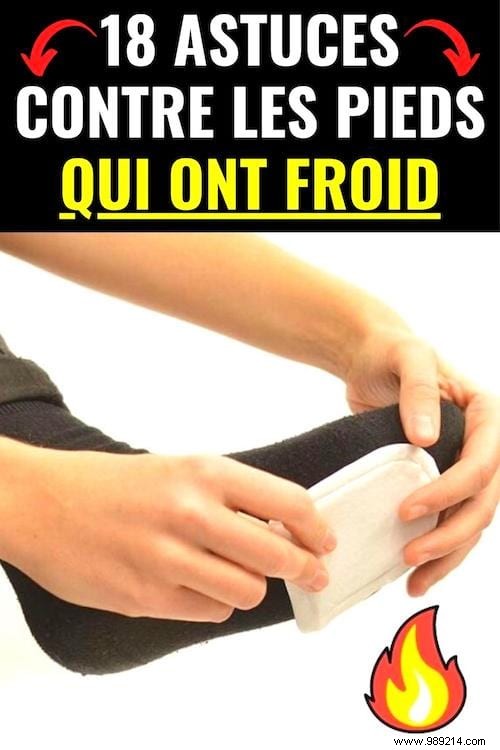
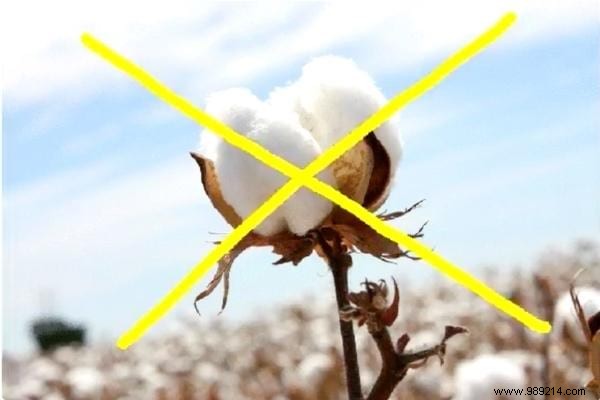
You've probably never noticed it, but cotton socks make your feet cold.
Indeed, this material gets wet very quickly with sweat and above all does not dry quickly.
Consequences:the feet become very cold because of the humidity which does not evaporate!
You should therefore avoid putting cotton socks on your feet.
It's not the ideal material to put on when it's raining and very cold.
Wear polyester or especially wool socks instead.
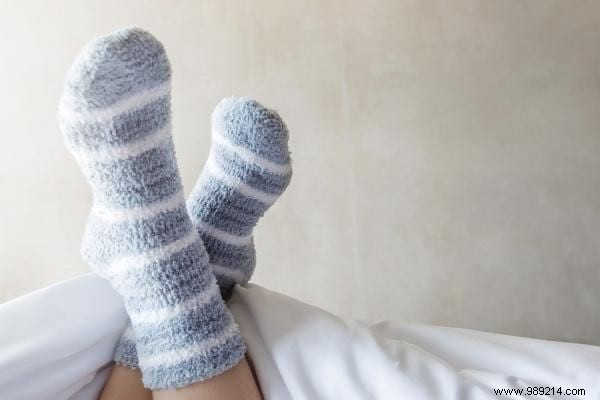
Wool is the best fiber on the market to keep your toes warm.
Unlike other materials, it does not itch and is thermostatic.
That is to say, it regulates and maintains the temperature.
It also manages the humidity effect much better to the foot thanks to its hydrophobic and hygroscopic properties.
This means that they repel and absorb water at the same time.
This water can therefore evaporate into the air without cooling the feet. That's the thing to remember.
Be careful though.
Some products sold on the market mix wool and other less noble materials...
Prefer socks like these made of at least 70% wool.
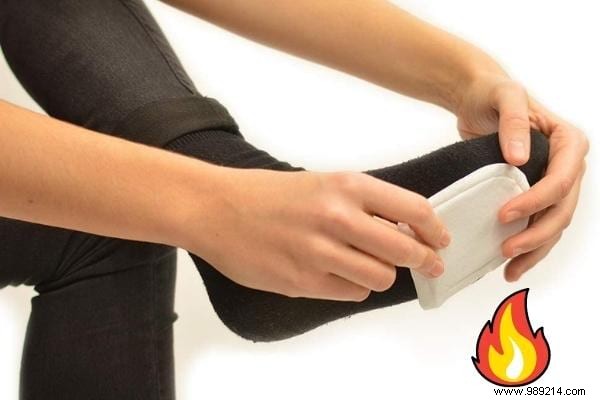
I'm pretty sure you've never heard of toe warmers.
However, the principle is simple and above all very effective.
They are small pads that fit into any shoe and provide warmth.
Just place them under the toes.
They are perfect if it is very cold outside and your feet are particularly chilly.
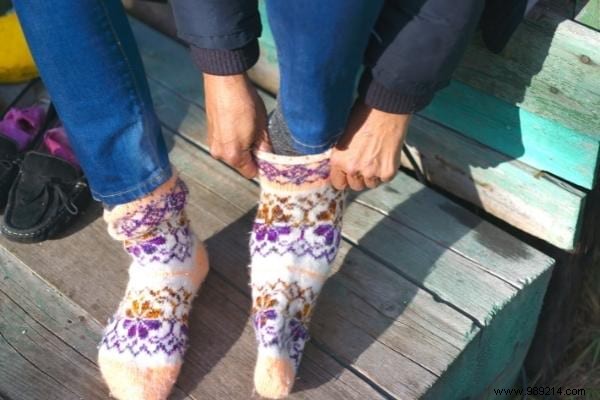
To have warm feet, you don't need 50 tricks, will you tell me.
Just put on 2 pairs of socks and you're done.
Well, it's not that simple...
Yes, you can double your socks, but not just anyhow.
For example, 2 pairs of cotton socks on top of each other will not work.
Ditto for 2 pairs in wool.
You risk trapping moisture and disrupting blood circulation.
You then obtain the opposite effect to that sought by reinforcing the feeling of cold!
When you put on 2 pairs of socks, you must respect the following combination:
First, put on a thin pair of socks (silk for example) then a woolen pair.
Since silk socks are thinner, this does not compress the foot.
The woolen pair is responsible for providing warmth.
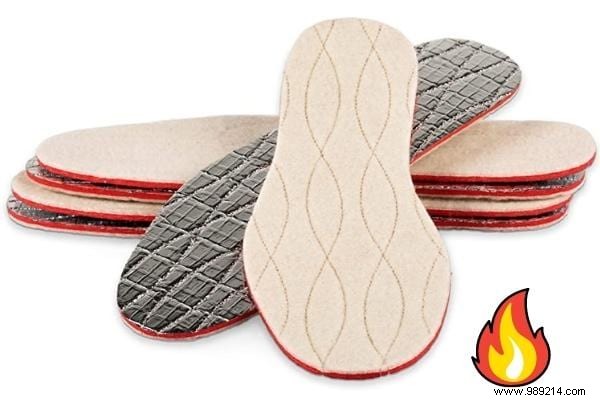
The soles must be very thick to block the cold, because the cold rises from the ground.
But often this is not enough.
You can then use so-called anti-cold or thermal insoles.
They prevent the cold from seeping into the shoe.
Honestly trying it is quite amazing.
You really don't feel the cold slipping under your feet anymore.
And if you want total protection, also equip yourself with thermal tights.
And yes, it also exists.
These tights also help evacuate unpleasant odors while retaining warmth.
With all this paraphernalia, your feet are really warm.
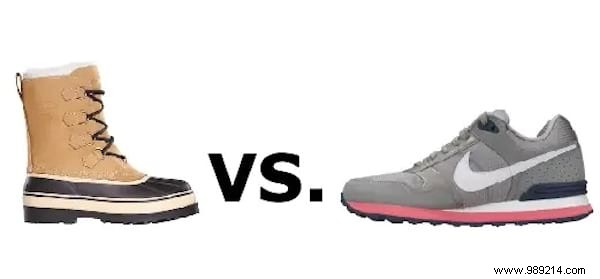
To properly keep your feet warm, you must adapt your socks to the type of shoes worn.
Let me explain.
If you're wearing a super thick pair of boots, you don't need to wear super thick socks as well.
Conversely, if you wear sneakers in the snow, wear sturdy socks.
You must adapt to each situation and especially during your activities.
Hunting, football, skiing... a pair of socks for every leisure activity.

We can fight the coldness in a more global way, in particular by an adapted lifestyle.
Know for example that the cold dehydrates just as much as the heat.
It is therefore necessary to drink enough and if possible hot.
Also eat foods that promote thermogenesis (the mechanism that produces body heat).
Eat foods rich in protein, vitamin C (fruits and vegetables) and E (dried fruits, olive oil...).
Also avoid highly caffeinated drinks and nicotine.
These are aggravating factors of chilliness.
Same for alcohol by the way.
They cause constriction (tightening) of the vessels, which restricts blood flow.
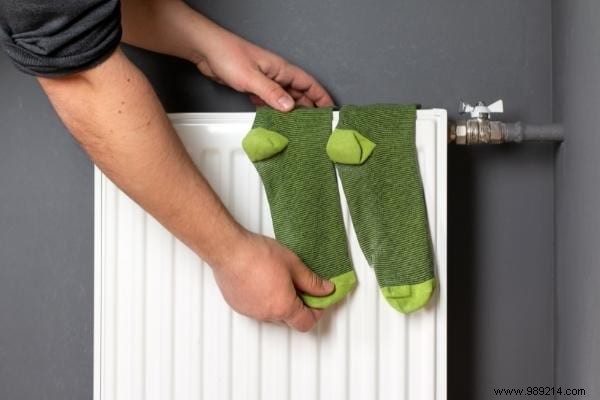
What a pleasure to slip into shoes or socks that have just been heated.
Be careful, when I say heated, I'm not saying that you have to put them in the oven or directly on a radiator!
You have to be more ingenious than that; because otherwise you risk damaging them.
For example, you can heat silk balls on a radiator and then put them inside your shoes.
You can also put the socks in the dryer about ten minutes before putting them on.
Or simply iron the socks.
Conversely, never put on wet shoes or socks in winter.
It's the assurance of being cold all day.
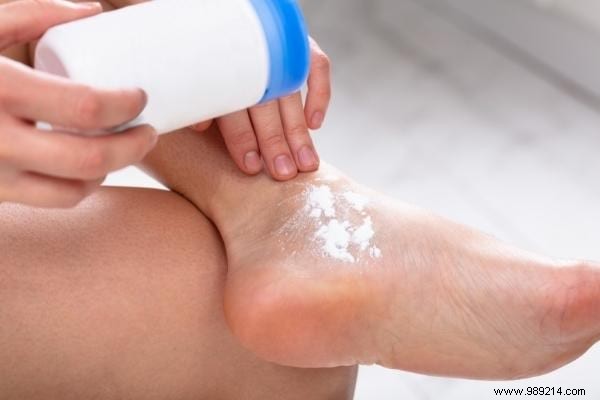
The feeling of cold is multiplied when moisture enters the shoe.
So a little bit of talc on the insole avoids this unpleasant phenomenon.
You can even put some in your slippers.
Talc =less perspiration =less humidity =less cold =warmer feet.
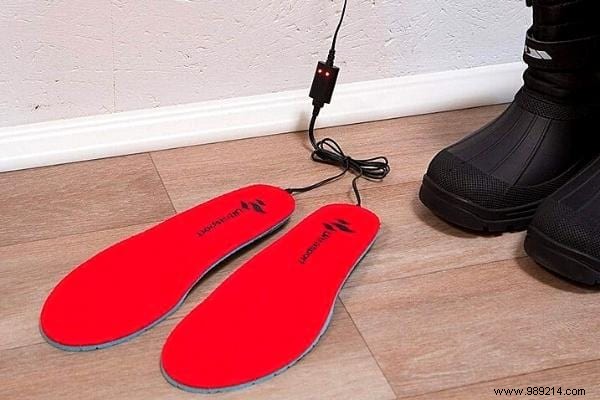
And yes, you may not believe it, but heated insoles do exist.
Either they have a battery or they plug in.
They deliver heat several hours after the first use.
But wait, that's not all.
They are equipped with a wireless remote control that you can operate whenever you want!
In the same vein, there are also heated socks.
More and more brands are making this type of electric socks.
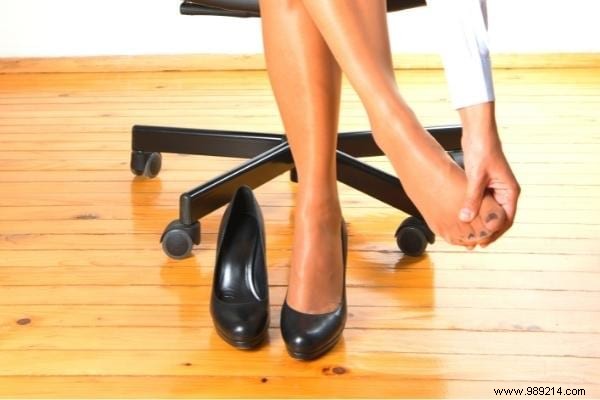
Having good blood circulation is the guarantee of having less cold feet.
You can use several methods for this.
First, you can massage the soles of your feet (in addition it relieves pain).
For it to be effective, do this at least twice a day (morning and evening).
This way you increase the blood circulation of this part of the body.
And when I say foot massage, I'm also talking about the toes. Stimulate me all that!
You can also tap your feet and especially wiggle your toes.
It seems a bit basic as a method, but it's very important.
Getting up and walking for 5 minutes promotes blood circulation.
This is all the more important if you work all day sitting in a desk.
Take the time to walk around a bit and wiggle your toes.
The feet then warm up on their own.
You can also do leg kicks on a chair.
Swing your legs back and forth 30-50 times.
The blood then circulates more towards your feet.
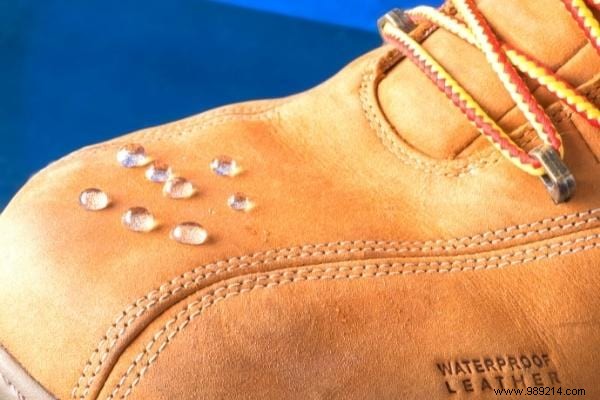
A pair of shoes that keeps you warm is above all a pair of shoes that is waterproof.
Even if they are lined in pilou-pilou, they still have to be waterproof.
That way, in case of bad weather, rain or snow won't penetrate the fabric.
The inside of the shoe is protected and your feet won't get cold.
If they are not at the base, you can make them waterproof with these natural tricks.
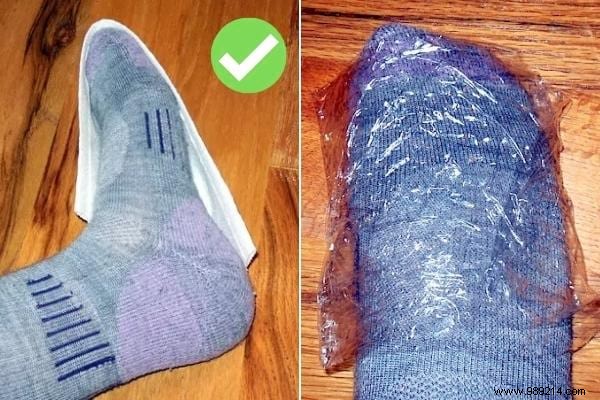
Paper towels and plastic wrap are excellent insulators.
On very cold days, take a paper towel or a napkin.
Fold either over the top and bottom of your foot.
Make sure you cover all your toes and put your shoe on.
This provides an impenetrable layer of insulation!
And it's pretty much the same method with plastic wrap.
Position the plastic wrap to cover the top of your foot and your toes.
This prevents cold air from reaching your toes, while sweat is not trapped at the bottom of the foot.
In addition, you can even keep your thick socks on because the film is very thin.
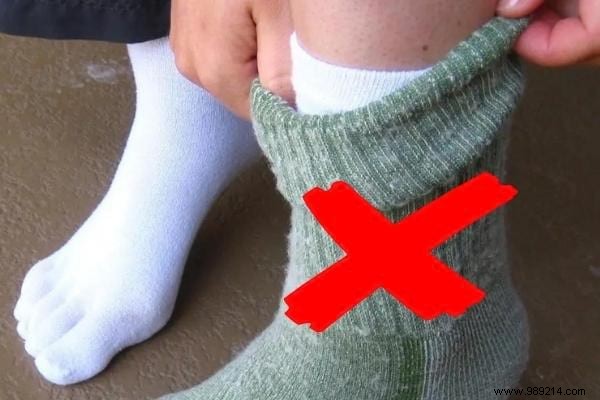
Thicker socks don't necessarily mean warmer.
This is actually one of the biggest mistakes we make.
Do you know why?
Because a sock that is too thick compresses the foot and can cut off blood circulation.
And who says poor blood circulation, says cold feet for sure.
To have the necessary comfort, you must be able to wiggle your toes freely inside the shoe.
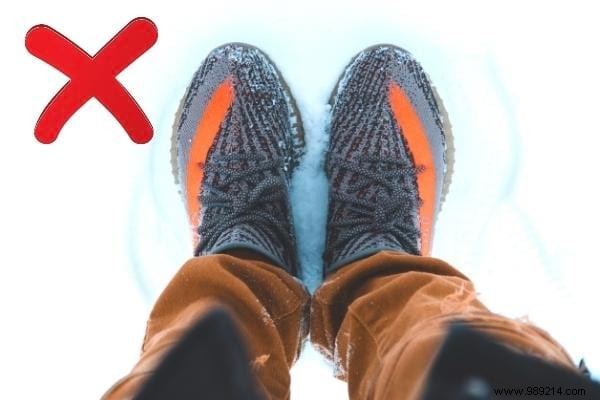
Most sports shoes are made to circulate the air well inside.
It's good, but it's not ideal when you're in cold and wet winter conditions.
In winter, prefer shoes made of leather or fabric with a very tight mesh.
In this way, you limit or even completely stop the flow of air responsible for cold feet.
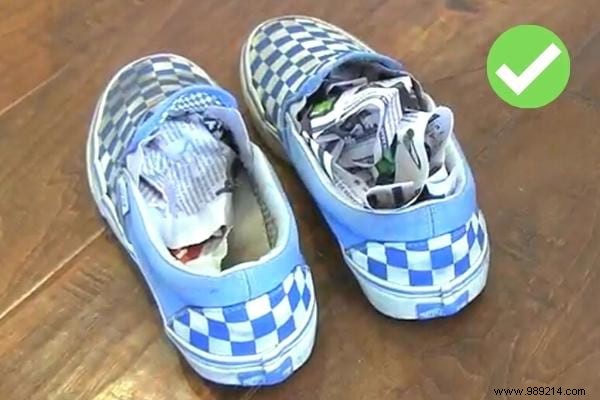
This trick comes to me from a friend who practices mountain biking.
One day, before leaving to do his sport, I see him put newspaper on his stomach and his feet.
I asked him why he was doing that.
He answered me a simple thing:newspaper is an excellent disposable insulator.
It's an easy and free solution to make windbreakers.
I put some in my sneakers so that the air can't get inside.
However, you can only do this in cold, dry weather; not when it rains.
Otherwise the paper will get wet very quickly...
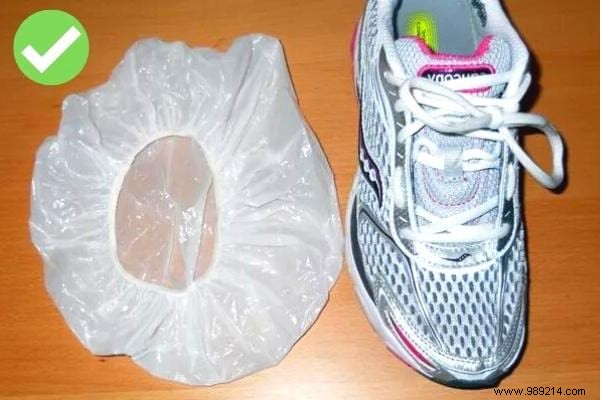
Disposable shower caps, which are found in hotels for example, are not only used to protect the hair!
Since they are waterproof, they can insulate other parts of the body very well.
Do you see where I'm coming from?
Put these beanies around the sock and put on your shoes.
You then have a waterproof layer inside the shoe that protects you from moisture.
Well thought out, no?
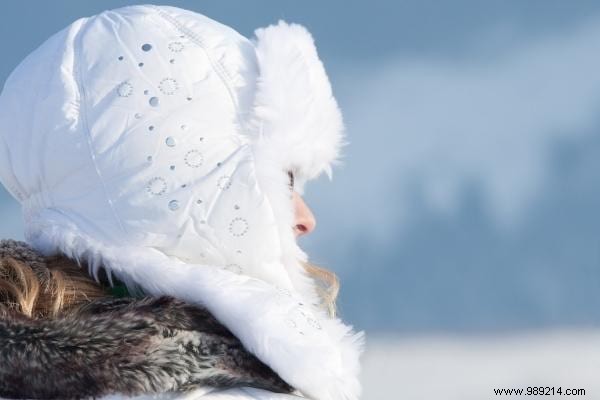
After jogging in the winter, have you ever noticed all the steam escaping from your head?
And yes, our brain being very irrigated, we lose a lot of heat there.
Covering your head therefore prevents some of the heat produced by the body from evaporating.
Because the colder your body, the colder your feet.
So put on a cozy hat or a chapka to save some body heat.
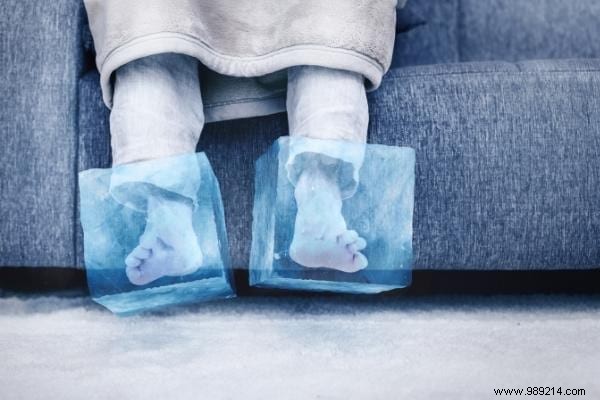
Our organization is really well done.
When the body feels the cold, it concentrates on the vital functions that need it the most (heart, lungs, etc.).
As soon as the symptoms of cold appear, the body irrigates these organs first.
This is why we first feel the cold on the extremities.
The explanation comes from there.
If you're in a place that's too cold, well, it's your feet and hands that clink glasses.
Studies have also shown that women suffer a little more from the cold than men.
This is explained by a difference in muscle mass, skin thickness and fat.
Women even suffer 9 times more from cold feet! You realize.
And if you have poor blood circulation, this is also one of the causes of frozen feet.
There can also be several reasons for these blood circulation disorders:
Socks or shoes that are too tight.
Poor diet or lack of hydration.
Or even too high a cholesterol level.
Finally, certain diseases can also be one of the causes of this concern.
The most common diseases are anemia, diabetes, thyroid.
Shoes are one of the most important elements to stop having cold feet.
For them to be effective, they must prevent the cold from the ground from rising towards the feet.
And we mistakenly believe that taking high-top shoes is enough. That's wrong...
In fact, there are 3 main things your shoe must have to protect against the cold.
First, the assembly of the shoe must allow it to be as waterproof as possible.
For this, choose shoes with a stitched sole called "good year" or "Norwegian".
Have you ever heard of these 2 types of production?
In fact, it is simply a process of making. Instead of gluing the sole, we sew it securely to the rest.
These 2 techniques are known to allow the shoe to be very waterproof and waterproof.
Which is not usually the case with other shoes, especially cheap ones.
Then, you have to take an interest in the sole and its material.
I would even say that you have to take a very, very close look at it.
They are in direct contact with the ground so inevitably, they are the first responsible for cold feet.
An effective sole is made of gum / rubber.
It's much better than a leather sole from an insulation point of view.
However, if there is a rubber/rubber spacer under the leather sole, no problem.
Insulation is also done against the cold.
Finally and to end this point, the shoe must be lined.
Dubbing is the fact of mounting the shoe with 2 layers of skin or fabric.
It allows you to better fight against the cold.
Ah yes, last thing anyway.
To prevent the cold from penetrating the shoe, tighten it well, but not too much either!
You have to find the right balance so as not to prevent blood circulation from taking place.
Remember what I told you above about the causes of cold feet.
Having good shoes on your feet is not enough to stop having cold feet.
It is necessary to associate a good pair of socks in addition so that everything is effective.
It's the combination of these 2 things that makes you have more frozen feet.
The material of your socks is therefore fundamental.
If you have read the tips above, you have understood that wool is the best choice.
It combines all the characteristics that allow you to stop being cold:
- It absorbs moisture and expels it outside the sock.
- It is "thermoregulatory", that is to say, it adapts to the season.
- It keeps you warm in winter and keeps you cool in summer.
- It helps fight against bad foot odor.
So if you only have synthetic fiber socks, you know what to do.
Replace them with pure wool socks.
Otherwise, you enter the vicious circle perspiration ==> humidity ==> feeling cold!
Are your feet really cold and you need to warm them up super fast?
No problem with this technique.
Rub your hands very vigorously against each other to make them very warm.
Take a very rich or vegetable cream to apply to each foot.
Knead the soles of the feet, from the heel to the toes, but with the fist .
After 5 min, massage again, but making small circular movements with the thumb.